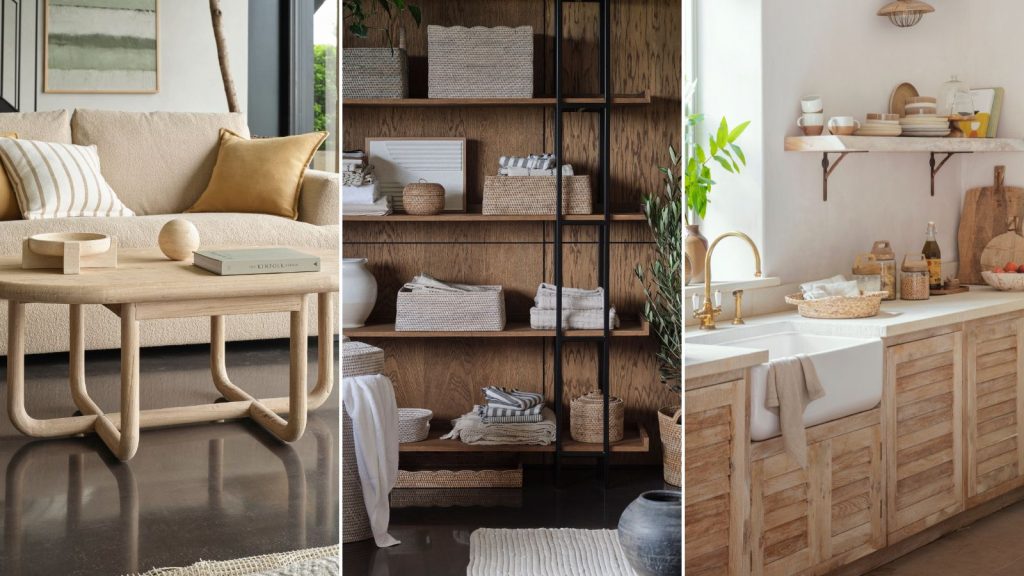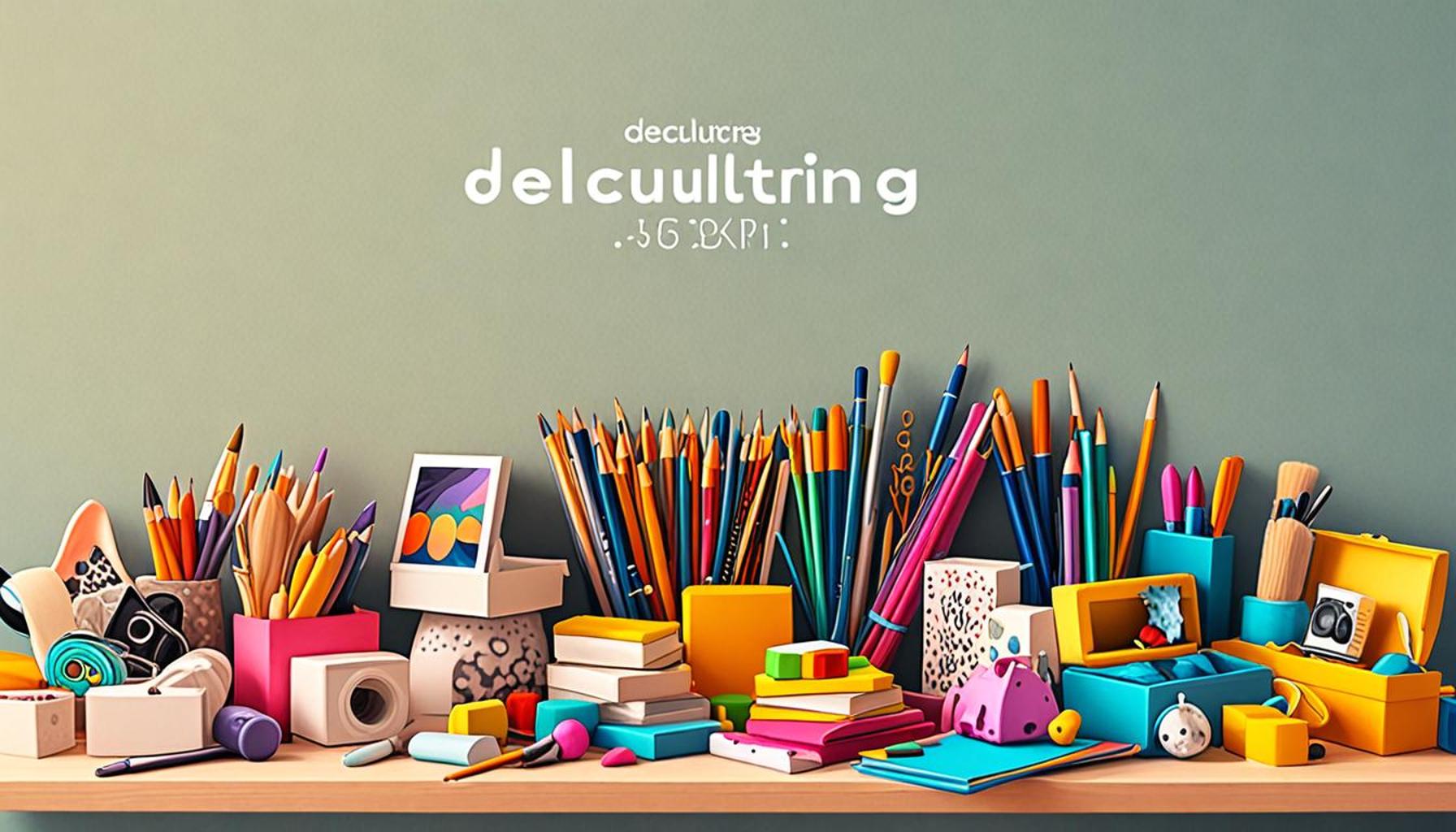Decluttering Strategies for Families: Involving Everyone in Home Organization

The Importance of Decluttering
In today’s fast-paced world, the importance of a well-organized home cannot be overstated. Families often find themselves overwhelmed by clutter, which affects not only their living space but also their mental well-being. Implementing effective decluttering strategies that involve every family member can transform your home into a refuge of harmony. It’s not simply about tidying up; it’s about fostering a healthier, more cooperative environment where everyone feels comfortable and productive.
Consider the numerous benefits of an organized environment. A well-kept home reduces stress by creating a serene atmosphere, allowing family members to unwind without visual distractions. Studies have shown that clutter can activate stress-related hormones, making it essential to keep your surroundings tidy. Moreover, an organized space enhances productivity. When essential items are easy to locate, everyday tasks become more efficient, whether that means finding a favorite book or the charger for a device. Lastly, an organized environment improves family bonding. Engaging in decluttering as a unit fosters teamwork and communication, reinforcing the family’s sense of connection and support for one another.
Engaging everyone, from toddlers to teenagers, in the decluttering process not only helps streamline the home but also cultivates essential life skills such as organization and responsibility. Getting children involved early on teaches them the value of a tidy space and the importance of maintaining it. To kick off your decluttering journey, consider these effective strategies:
- Set a family goal: Decide on a specific area to tackle together, such as the living room or a shared bedroom. Setting clear goals creates a sense of achievement once the task is completed.
- Assign age-appropriate tasks: Tailor responsibilities according to each family member’s capabilities. Younger children can help with sorting toys, while older kids can take on the organization of books or clothing.
- Establish a reward system: Celebrate achievements to motivate continued efforts. Consider rewards like a family movie night or a picnic in the park after completing a major decluttering session.
By actively involving every family member in the decluttering process, you create a more harmonious living space where responsibilities are shared, and communication thrives. It transforms the task of decluttering into an engaging family activity rather than a tedious chore.
Ready to embark on a journey to a more organized living space? Consider the positive impacts a decluttered home can have on your family’s interaction, and explore these strategies to effectively declutter as a family. Organizational skills learned today can lead to a lifetime of benefits, both at home and beyond.

DISCOVER MORE: Click here to learn how to maximize your minimalist spaces
Creating a Family-Centered Decluttering Plan
When embarking on a decluttering journey, it’s essential to craft a plan that includes a structural approach where the entire family can participate. This not only streamlines the organization process but also addresses the unique needs and routines of each household member. A well-thought-out plan can make a significant difference, turning the daunting task of decluttering into an enjoyable family activity. Here are some practical steps to create a family-centered decluttering plan that maximizes involvement and commitment:
- Hold a Family Meeting: Start the process by gathering everyone for a family meeting. Discuss the reasons behind the decluttering initiative and invite input on which areas need attention most. When family members have a voice in the decision-making process, they are more likely to feel engaged and committed to the outcome.
- Set a Decluttering Schedule: Determine a convenient schedule for decluttering sessions. Whether it’s a dedicated weekend day or an hour each evening, setting specific times helps the family prepare mentally and physically for the task at hand. Consistency is key in building a routine around organization.
- Choose the Right Decluttering Method: There are several established decluttering methods, such as the KonMari method, which emphasizes keeping only items that “spark joy,” or the Four-Box Method, which categorizes items into keep, donate, sell, and trash. Explore these methods together as a family and select the one that resonates most to inspire collective participation.
- Incorporate Fun into the Process: Turn decluttering into a fun event. Create playlists of your family’s favorite songs to listen to while organizing, or set up a friendly competition to see who can declutter their designated area the fastest. Celebrating small victories, like completing a room, can keep spirits high.
These strategies lay a solid foundation for decluttering your home as a family. By establishing a co-created plan, every member is likely to feel valued and significant, turning what could be a mundane task into a rewarding group experience. Remember, moving forward requires flexibility; some strategies may resonate better than others, and that’s perfectly acceptable. The goal is to keep the momentum going while encouraging each family member to contribute.
As you develop the plan, it’s crucial to remind everyone that decluttering is a journey, not a race. The focus should be on progress rather than perfection. As your family learns to work together harmoniously towards a clutter-free environment, the skills acquired during this process will benefit everyone long after the initial project is completed.
Decluttering Strategies for Families: Involving Everyone in Home Organization
When it comes to home organization, involving every family member is crucial. It not only fosters teamwork but also helps instill a sense of accountability and pride in maintaining a tidy living space. Here are some effective strategies that can be implemented to achieve a well-organized home environment.
| Category | Advantages |
|---|---|
| Family Meetings | Encourages communication and shared goal setting. |
| Task Assignments | Empowers children with responsibility and ownership. |
| Decluttering Zones | Makes the process manageable with clear focus areas. |
| Incentive Programs | Motivates everyone to participate through rewards. |
Creating a shared understanding of the importance of decluttering can lead to more effective results. Begin by hosting a family meeting to discuss the goals of organizing your home. Delve into each member’s personal experiences and preferences, leading to a tailored approach that meets everyone’s needs.
Designating specific decluttering zones will make the task seem less daunting. Each family member can focus on their assigned space, which minimizes overwhelm and encourages efficiency. Don’t forget the power of incentive programs—these can transform mundane tasks into fun challenges, ensuring everyone is engaged and motivated to pitch in.
By fostering an environment where everyone feels involved and valued, families can achieve a cohesive and organized home that reflects collective effort and care. Emphasize the fun in the process, turning chores into family activities that strengthen relationships and create lasting memories.
DISCOVER MORE: Click here to learn about the benefits of natural light
Implementing Age-Appropriate Decluttering Tasks
As families embark on their decluttering journey, it’s vital to assign age-appropriate tasks that ensure every member can contribute meaningfully. Not only does this foster a sense of ownership, but it also teaches valuable life skills that can last a lifetime. Here are some tailored strategies based on various age groups:
- Young Children: For children under the age of 7, the focus should be on basic organization. Encourage them to sort their toys into categories like “keep” and “donate.” Use colorful bins or labels to make it visually appealing. Engaging in games, like a scavenger hunt to identify items that are no longer used, can create excitement around the process.
- School-Aged Kids: As children grow, they can handle slightly more responsibility. Kids aged 7 to 12 can help with organizing their own closets and bedrooms. Introduce them to the “one in, one out” principle: for every new item brought into the house, something should be removed. This can help maintain balance and prevent clutter from accumulating.
- Teens: With teenagers, it’s crucial to respect their sense of autonomy. Involve them in decision-making by asking them to assess their own belongings. Create a challenge, such as getting rid of 10 items within a week. Encourage them to think critically about their possessions and how they align with their current interests. This not only keeps their space organized but also cultivates a sense of responsibility.
By customizing tasks based on age, families can ensure that everyone feels capable and respected in their ability to contribute to home organization. Involving children at a young age teaches them sustainable habits that can continue into adulthood, resulting in more organized living spaces as they grow.
Utilizing Visual Tools and Checklists
Visual tools can significantly enhance engagement in the decluttering process. For families, creating a shared vision board, pinning pictures of organized spaces, or drawing out checklists can provide clear goals and celebrate achievements. Here are some suggestions:
- Checklists: Generate decluttering checklists for each family member, detailing tasks that need to be accomplished. This could range from cleaning out a closet to organizing kitchen drawers. Checklists not only serve as a guide but also provide a sense of accomplishment as each item is ticked off.
- Progress Charts: Implement visual progress charts where family members can mark off completed tasks. Offering small rewards, such as a family movie night or an ice cream outing, can motivate everyone to participate actively.
- Pinterest Boards: Encourage families to create a collective Pinterest board filled with inspiration for organizational styles and hacks. This digital collection can motivate and inform all members of the family while giving them agency in decorating and organizing their shared spaces.
The use of visual tools, along with regular check-ins about progress, keeps the decluttering process lively and goal-oriented, making it easier for families to collaborate. As you employ these strategies, remember that communication remains key. Regular discussions about what works and what doesn’t can refine your approach, ultimately leading to a more organized, clutter-free home.
DISCOVER MORE: Click here for expert tips on maximizing small spaces
Conclusion
Involving every family member in the decluttering process not only enhances home organization but also fosters a sense of unity and responsibility. By implementing age-appropriate tasks and utilizing visual tools, families can transform what might seem like a daunting chore into an engaging and collaborative effort. Each step taken towards a clutter-free home lays the foundation for healthier living environments, improved mental well-being, and valuable life skills such as organization and decision-making.
Consider viewing decluttering not merely as a singular event but as an ongoing journey. With strategies like checklists and challenge systems, families can create a routine that prevents clutter from accumulating in the first place. Keeping lines of communication open ensures that everyone’s voice is heard and respective goals are aligned, which can lead to a more harmonious living space.
As families embark on this decluttering adventure, they discover that every item has a place, and every member has a role in crafting a sanctuary that reflects their unique lifestyle. This cooperative spirit not only revitalizes homes but also strengthens familial bonds. Ultimately, decluttering is more than just organizing physical items; it’s about cultivating a shared sense of purpose and creating lasting memories together. So gather your family, and start your decluttering journey today—your future self will thank you!


